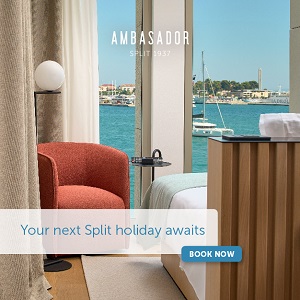Want Some Good COVID-19 News? Hvar Corona Patient Has Recovered!
April 4, 2020 - Is there any such thing as good COVID-19 news? Great news for Croatia's premier island, as the only Hvar corona case has made a full recovery.
There are certain moments on all our memories when the COVID-19 reality got a little more real and closer to home.
A big one for me came on March 20, 2020 when I reported on something I hoped I would never have to report on - the first Hvar corona case in gorgeous Vrboska, just 3 km from my front door:
According to local media reports, the man had recently returned from Austria, where he has been working as a waiter. During his travels in Croatia, he used the train twice, the bus once, and the Jadrolinija ferry, Zadar.
Local media report that he followed all the rules on self-exclusion, and when he noticed the first signs of the disease, he contacted the doctors, and when the tests turned out to be positive, he was transferred to a hospital in Split.
And if one case had come, how many more cases and infections would there be. A mild panic set in.
Dalmatia is never the best place to establish facts, and rumours abound. I am apparently the regional section chief of MI6, for example. And the CIA. And Mossad. And while it might be true that I run one of them, I clearly cannot do all three, as there would be no time left for blogging.
I digress.
Thankfully, I have reliable local sources in Vrboska, and so am able to work through the rumours.
I got information today that the Vrboska man who had the infection is now fully recovered. Great news!
As well as the fact that all his immediate family and close circle were put in isolation, and none has shown any symptoms.
In some ways, this has been a good thing for Hvar, for the case brought it brutally home that Hvar corona was something that was real and could spread. I have been REALLY impressed at the success of restricted movement on the island, and I obviously feel a lot safer now for my family with this news.
But I also want to say a big thank you to the man who was infected. TCN's Joe Orovic did a brilliant piece yesterday on the social stigma now being attached to people who are corona positive in the community.
According to my information, the 40-year-old man was working as a waiter in Austria when the bar he was working in closed due to corona. He had little option but to return home.
At the Croatian border, he received instructions on travel and self-isolation. He wore a mask and gloves all the way home, staying apart from others as much as possible by shutting himself away from the rest of the family in an attic room.
When he showed symptoms, he was taken to Split, and all his contact circle put into isolation.
It is certainly not his fault that he contracted the virus, and I applaud his sense of responsibility which - fingers crossed - seems to have been effective.
If everyone else does the same, the chances of success will be all the higher.
I will sleep a little easier tonight.
For the latest on the corona crisis, follow the dedicated TCN link.
Restarting Croatian Tourism from the UK After the Homeland War: a Travel Agent's Tale
March 28, 2020 - How do you restart tourism when it comes to a crashing halt? Former travel agent Martin Gannon, on how tourism from London to Croatia got going again after the Homeland War, and the experience and reception those first guests received.
One of the strangest things about this VERY period of world history is how dated things get so very quickly. Something that seemed like a new revelation yesterday already belongs to a previous era a day later. Three days ago I wrote an article called Hope v Reality: Will There Be a 2020 Tourist Season in Croatia? is order to share some insights with people making decisions on strategy for this tourist season. By the time the article appeared in Croatia on Index last night, it was already a little dated.
So with tourism coming to an abrupt halt, how will it get started again when all this madness is over? As I wrote yesterday, 25 years ago, the Jelsa hotels were full all year, but there were no tourists. There were used to house refugees from other parts of Croatia and Bosnia.
But what happened after the war, and how did tourism restart? I asked Martin Gannon, the original crazy Englishman who fell in love with Jelsa back in 1980, how his travel business got back on its feet after the war.
Here is his very heartwarming account, with some things to think about and take encouragement from, perhaps.
My travels to visit Croatia and Jelsa during and at the end of the Homeland War brought me to this incredible place that I had known since 1980. I had started work at the end of 1980 for Saga in Porec in Istria looking after slighty more senior guests in Hotels as a holiday rep, then moving on to being a coach tour guide to British and American guests covering the whole of Former Yugoslavia. I saw tourism then as a mass enterprise, low-value, lots of people, simple hotels and very little private input. I continued with different organistations ending up as a senior manager with Pilgrim Holidays owned by Yugoslav Airlines (JAT) and brought in business travel and smaller hotels for British tourists a more quality product. And it sold unbelievably well.
Then tourism stopped with the Homeland war and the majority of hotels along the coast were needed to house refugees.
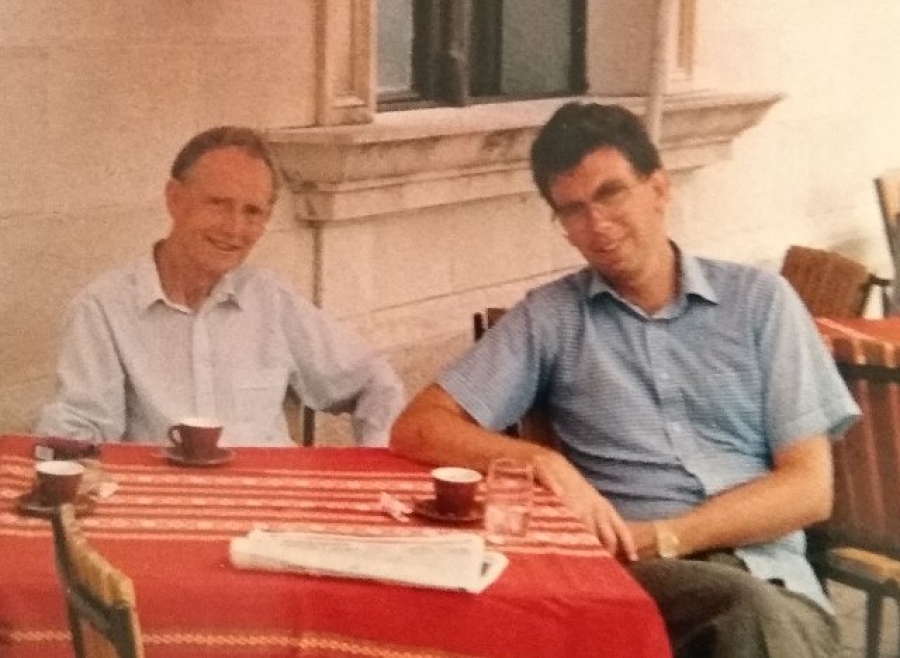
(Martin Gannon with his father in Jelsa)
I was with the Croatian community in London, helping with Caritas, so was still in contact with people I used to work with. One Croatian who owned a travel agency found there was a lot of interest still in people wanting to get to Medjurgorje from the UK and Ireland. Croatia Airlines had just taken delivery of its first Airbus A319. This was chartered every Saturday from May until October flying from London Gatwick to Split. At first the majority of tickets sold were for pilgrimages, but slowly we began developing more bookings for holidaymakers. One of the first contracts was with a small private hotel in Trogir called Hotel Concorde.
Slowly more apartments small private hotels began to make themselves known, and we advertised them as best as we could with very limited resources.
One of the larger hotels I contracted was the Mina Hotel in Jelsa, which I was delighted to bring back into tourism to get work back into the village.
Unfortunately, the number of British tourists was still low, but the Italians and Germans were returning in greater numbers.
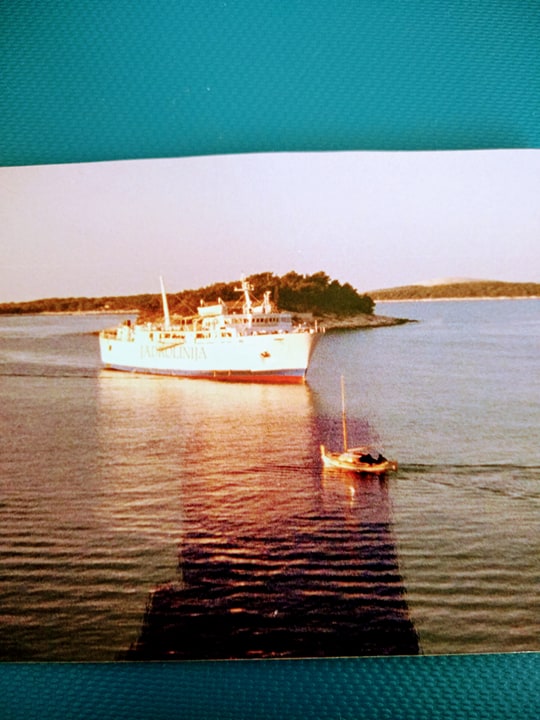
So what did these holidaymakers find when they came back? Pure Heaven, and I'm not exaggerating. Local people were delighted to see visitors again, from the friendly and kind help they would find in their apartments, from free wine, fruit and kind and caring advice, to a wonderful atmosphere of being appreciated. The amount of letters we received in the office from people who had been on holiday to Croatia saying it was the best holiday ever, was truly incredible.
In Jelsa the few restaurants that reopened served beautiful fresh fish literally caught in the bay. Fish was abundant as it had been subject to barely any fishing for years. Fresh vegetables grown in the owners' gardens, as they had had to start growing their own food to survive.
Café bars and restaurants would not rush you through, if you only spent a few Kuna it did not matter, you were there at least as a customer. People had survived on barely nothing, so now even as a small amount of money appeared they were grateful for it, not greedy for it.
It is difficult to exactly put in words the atmosphere, it was one of pure happiness, of contentment, we had got through the difficult times now there was a future, look after the guests and they will return.
When the war came to Kosovo in 1998-9 the British tourists almost disappeared, and it was a real struggle to get them to come to Croatia. But again Croatians stayed strong. It was a frustration, but by treating the tourists who came in a kind and generous way they never forgot, and they told others of their experience and slowly the numbers began to increase.
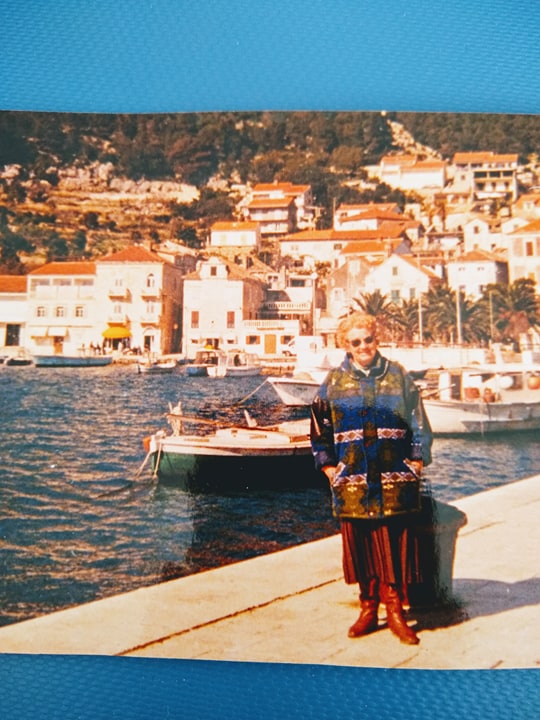
(Martin Gannon's mother on Hvar in the 1990s)
These visitors at this time, had true relaxing holidays, no enormous crowds, fresh local food, excellent wine, food in restaurants was homemade, not imported frozen fish.
I think now its an opportunity to reflect, and realise it's far better to enjoy a little, rather than be overcrowded and stressed. Croatia is a stunningly beautiful place, I have travelled the world, and know no other place like it,.My heart leaps when I get back there, I feel rejuvenated, and the wonderful kindness and caring of my Croatian friends is truly moving.
I know this year will be very difficult, but if tourism can return in style and delivery like those years in the late 90s and early 2000s , so it can after corona, and it will reap the benefits, in more ways than one.
You can learn more about Martin Gannon's tourism career from 1980 onwards in this lovely article on Eco Hvar.
25 Years Ago, Jelsa Hotels Were Full But There Were No Tourists
March 27, 2020 - It is 25 years since Jelsa hotels had no tourists, but back in 1995, there were very full, as a local resident recalls.
It is going to be a very strange summer for everyone. Having lived in a tourist destination (Jelsa on Hvar) and finding myself self-isolating here, the prospect of empty hotels and no tourism is hard to imagine, even before one imagines the pain that will cause the local economy. As I wrote recently in Hope v Reality: Will There Be a 2020 Tourist Season in Croatia?, while we all hope this will be over soon, a look at the realities of the situation and how the world will look on the other side make for some sober reading.
But Jelsa, and many other destinations in Croatia, are no strangers to the tourism season being ravaged. The Homeland War in the 1990s killed tourism, but that did not mean that Jelsa hotels were empty, far from it.
Instead of tourists, the hotels slowly filled with internally displaced people from Vukovar and other parts of Slavonia, followed by refugees from Bosnia. Jelsa schools accommodated the kids, and the new arrivals from war-ravaged areas began a prolonged stay.
I am very grateful to erstwhile TCN contributor and unpaid typo-controller-in-chief in the early days of Total Hvar, Vivian Grisogono, for this fascinating account of her recollections of the war years in Jelsa:
"I came over to Hvar as soon as the blockade was pushed back, possibly during my visit (bringing various bits of aid to Zagreb and Split) in June 1992, certainly for my Fact-Finding Mission on behalf of UNDP / UNHCR which I did between 9th & 21st August 1992. Whichever it was, my friends were delighted to joke that the aggressors had heard I was coming and taken their gunships away! as that happened just a few days before I got to the island.
Apart from the blockade, the island's little air strip was bombed more than once, and had not been repaired at the time of my visit.This left the island totally isolated and vulnerable: no Canadairs to deal with the frequent forest fires, and no emergency medical airlift service.
My itinerary was through Slovenia and Croatia, looking at the report I did, it was quite hectic! Was supposed to go to Serbia & Montenegro as well, but UN couldn't guarantee my safety, as technically I was still a Yugo citizen at the time. On Hvar Kruni Peronja was President of the Island (a post which is now defunct). The organization of facilities for the refugees was extremely impressive. I visited the Hotel Jadran, inspecting the (spotless) kitchen and living facilities. People making the best of it, but of course a hotel is not a true living space for families. Even less comfortable was the former children's holiday camp (Grebišće) where again the kitchen was spotless, but the living accommodation was sparse - rooms generally had 3 beds which took up almost all the available space, and the building was already in a state of disrepair (though not as bad as now)
My record shows that as at 17th August there were 624 displaced persons (many from the Vukovar region) and 3727 refugees on the island. 1323 were housed in private lodgings, the rest in hotels or former holiday camps. Refugees were provided with a special id card which entitled them to benefits such as food & lodging. Displaced people also received small amounts of money. At the time, electricity was severely limited in Dalmatia because of the occupation of the Peruća dam - there was a point when electricity was only available for a few hours at night. Food was in short supply, firstly while the blockade lasted, and then because of the transport difficulties across the country - remember that Knin was blockaded, and the road detour from the north to the south of Croatia along the coast was complicated, not to say fairly dangerous (I did it later on towards the end of the war, when the dangers were minimal, but just going over the pontoon bridge put up in place of the Maslenica Bridge was a hairy experience at night, even without people firing at you!). On Hvar, heating for the refugees and displaced persons had been a problem during the winter, and was set to be a problem again after the summer.
There was of course a lot of unemployment on the island as tourism was reduced to zero, and a lot of people had optimistically invested in their private tourist facilities when Croatia declared independence in 1991. Locals had priority for such jobs as were available, so refugees / displaced persons had little or no chance. The lack of meaningful activity and income created severe psychological hardship.
Disabled refugees could not be accommodated on the island, but there were plans to receive groups of convalescents for rest, recreation and rehabilitation. Some of the facilities which were mooted for the purpose could have been adapted for wheelchairs users. The programme would have provided employment, and would have been a long-term benefit for the island, but it didn't happen, and indeed facilities for disabled wheelchair users are still extremely limited.
The other thing of note was that the local authorities had taken great trouble to protect property belonging to absent Serbs at that time, being aware that one day the war would end and they would be coming back. The feeling was that those who had not participated in the war should be made welcome at that later time, and should not be given cause for resentment. Quite a lot of those properties were offered for sale at knock-down prices. (As you know, after the war a few Serb-owned properties were commandeered by various incomers, which was sad, but probably inevitable, given the level of anger and frustration which was engendered by five years of misery.)
On the positive side, a lot of Hvar residents went out of their way to help the refugees and displaced people feel comfortable, even though they themselves were suffering their own hardships among all the uncertainties of the war. Friendships were forged which lasted way beyond the end of the aggression. Some of the refugees / displaced persons remained on the island and carved out new lives for themselves. Hvar's exquisite environment is a great bonus, but it wasn't easy for anyone in those long years of the war and its aftermath."
You can learn more about Vivian's environmental initiatives for the island and wider world on her Eco Hvar website.
Large Hvar Fire Breaks Out Between Ivan Dolac and Zavala
March 23, 2020 Update at 07:00 - 40 firefighters and 12 fire engines from the Jelsa and Stari Grad fire services battled the blaze and managed to localise it by 01:00 this morning, reports HRT. No information yet on how much damage was caused.
March 22, 2020 - A large Hvar fire has broken out on the south side of the island between Ivan Dolac and Zavala.
After a day in Croatia which was dominated by the natural disaster of devastating earthquakes in Zagreb, tonight one more addition to what is proving a very challenging time in Croatia - a large fire on the island of Hvar.
The Jelsa Fire Brigade were called to tackle a fire on the south side of the island through the Pitve tunnel, located between the popular tourist resorts of Zavala and Ivan Dolac.
Comments on the Jelsa Fire Brigade Facebook page suggest that the exact location of the latest Hvar fire is Medvid Bod.
Tackling the fire is being hampered by strong bura winds.
We will update the story tomorrow but you can follow the latest on the Jelsa Fire Brigade Facebook page.
'Za Krizen' on Hvar Overcame Fascists, Tito, Sinai Desert, But Will It Beat Corona?
March 21, 2020 - It is a UNESCO tradition which has taken place each year for 500 years despite the challenges of fascism, socialism and the Egyptian desert. But will Za Krizen 2020 beat the coronavirus?
When the coronavirus spread throughout Europe, there was much talk about banning events and social gatherings. Most were focused on rock concerts or Premier League matches, but my mind turned to something a little closer to my heart. If this event were cancelled due to COVID-19, what a statement for history! For this event has been challenged many times before, in different trying historical circumstances. But it has always taken place each year at 22:00 on Maundy Thursday on a beautiful Dalmatian island.
Every year. For 500 years. Without exception.
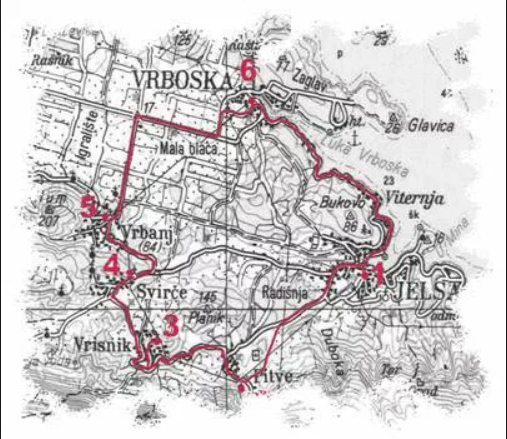
'Za Križen' (literally 'Behind the Cross') is a religious procession which is one of the most important events in the annual calendar of the people of central Hvar. At 22:00 on Maundy Thursday, a barefoot crossbearer, each from the six communities of Jelsa, Pitive, Vrisnik, Svirce, Vrbanj, and Vrboska, lead their acolytes and pilgrims on a 22-km procession of chanting, prayer and reflection through the other communities, before returning to their starting point around 07:00 on Good Friday. Several thousand people attend the event and walk through the night for this traditional procession, which was awarded the status of intangible UNESCO heritage back in 2009.
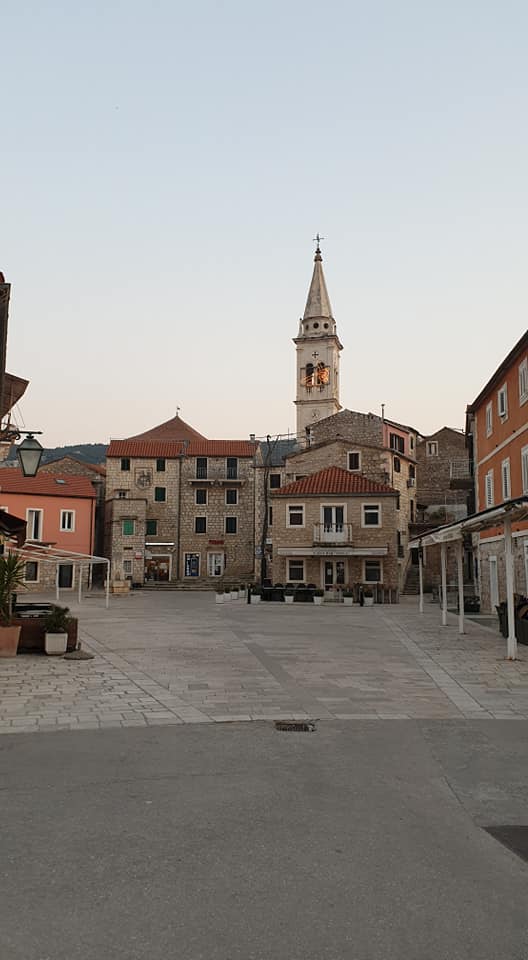
It is a procession which is steeped in history, heritage and pride. It is a great honour to carry the cross, and it is said that parents put their new-born babies on the waiting list for the honour. One of the best videos I have ever seen about the traditions of Hvar was Maja Zrnić's piece for Hvar TV following a Pitve crossbearer, Ivo Mileta, behind the scenes.
A really fascinating snapshot of a unique tradition which spans five centuries. The Italian fascists tried to ban it in 1943, but Za Krizen took place, albeit on a reduced scale.
In 1944, Za Križen took place in the Sinai Desert in Egypt, in a refugee camp in El Shatt. as refugees from Hvar insisted on honouring their traditions - you can read more about the incredible story of Dalmatian refugees in the Sinai Desert here.
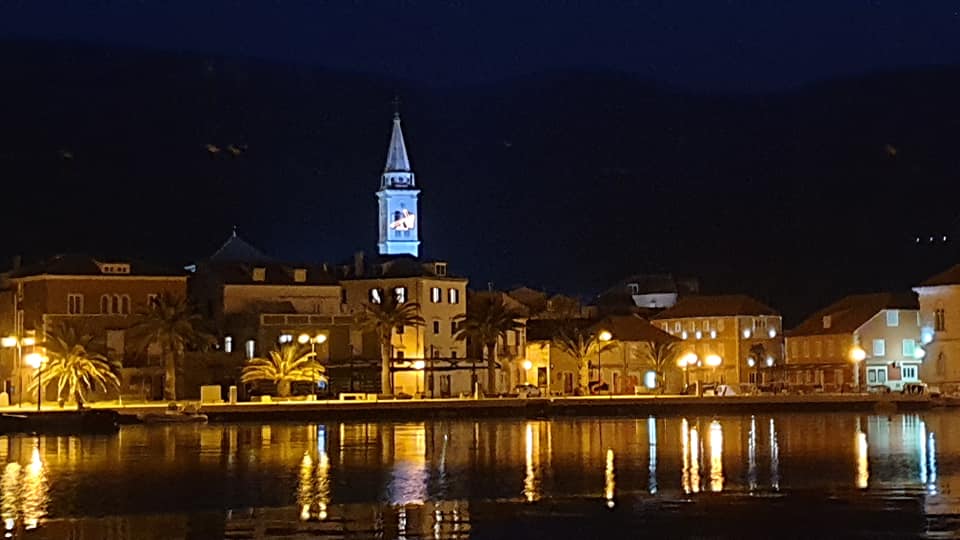
And, as the Pitve crossbearer in the video above shows, religious processions during the Tito socialist era were hardly encouraged.
Za Križen has overcome all these obstacles over its 500-year history. I managed to capture all six processions at various times on the night last year here.
But will Za Križen be able to overcome perhaps its biggest challenge yet - COVID-19?
With the ban on public gatherings and ferry transportation restricted to those with island IDs, it is clear that the many Hvar people living on the mainland will not return, and that there will be few to no pilgrims following the cross. But will the event take place?
Perhaps. And if it does take place, it will be one of the few events to actually be happy in these crazy times.
My understanding is that the current thinking is that the six crossbearers will definitely go, with perhaps a couple of assistants each, but nothing more. The mass gathering at the start and finish will not happen, and so it will be a rather curious affair for those who traditionally take part. The Vrboska crossbearer has apparently arrived from Canada, where he now resides, while the Pitve crossbearer Roman Radonić is the nephew of the youngest ever crossbearer, Sveto Marijan back in 1953, aged just 13.
It will undoubtedly still be a very special night, although - like everything else in the world right now - different.
I will bring you as much coverage as a responsible socially distanced journalist can. To learn more about the Za Krizen UNESCO tradition, check out the official UNESCO video below.
Coronavirus on Hvar: First Case Recorded on Croatian Islands in Vrboska
March 20, 2020 - The first case of coronavirus on Hvar has been confirmed, the first case recorded on Croatia's islands.
The first case of coronavirus on Hvar has been officially confirmed at a press conference in Split.
A 40-year-old local man from Vrboska tested positive for coronavirus and is currently undergoing treatment in hospital in Split.
According to local media reports, the man had recently returned from Austria, where he has been working as a waiter. During his travels in Croatia, he used the train twice, the bus once, and the Jadrolinija ferry, Zadar.
Local media report that he followed all the rules on self-exclusion, and when he noticed the first signs of the disease, he contacted the doctors, and when the tests turned out to be positive, he was transferred to a hospital in Split.
There were more details from the press conference:
"The person who came from Austria was sent into self-isolation immediately upon arrival. He went home. All contacts were immediately controlled, only one girl was in close contact. He had to get away from the others on the ferry, he had a mask on. He didn't hang out with anyone. Upon the onset of the first symptoms, he responded and an epidemiologist in Hvar responded promptly."
This is the first case of coronavirus on Hvar or any other Croatian island. The total number of cases in Croatia stands at 113, of which one has died, one is on a respirator, and five have recovered.
You can follow the latest national update from our coverage of this morning's press coverage here.
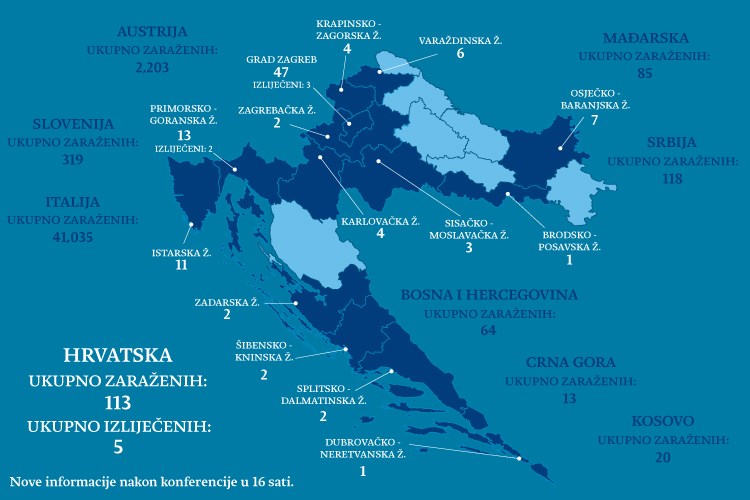
We will have the main TCN daily update about the situation all over Croatia coming shortly, and you can find that and all the latest TCN updates on our dedicated coronavirus section.
For the latest official updates from the Croatian Government, check out Koronavirus.hr (in Croatian only - Google Translate is your friend).
Life on Europe's Number 1 Island with All Bars, Restaurants Closed (VIDEO)
March 20, 2020 - So how does the Hvar lockdown look like? A wander around Jelsa the day after much of Croatia closed down.
It is just over 5 months since Hvar was voted the best island in Europe (it is!) by readers of Conde Nast in the prestigious Conde Nast Traveler Readers Choice Awards, the latest international endorsement of Croatia's premier island.
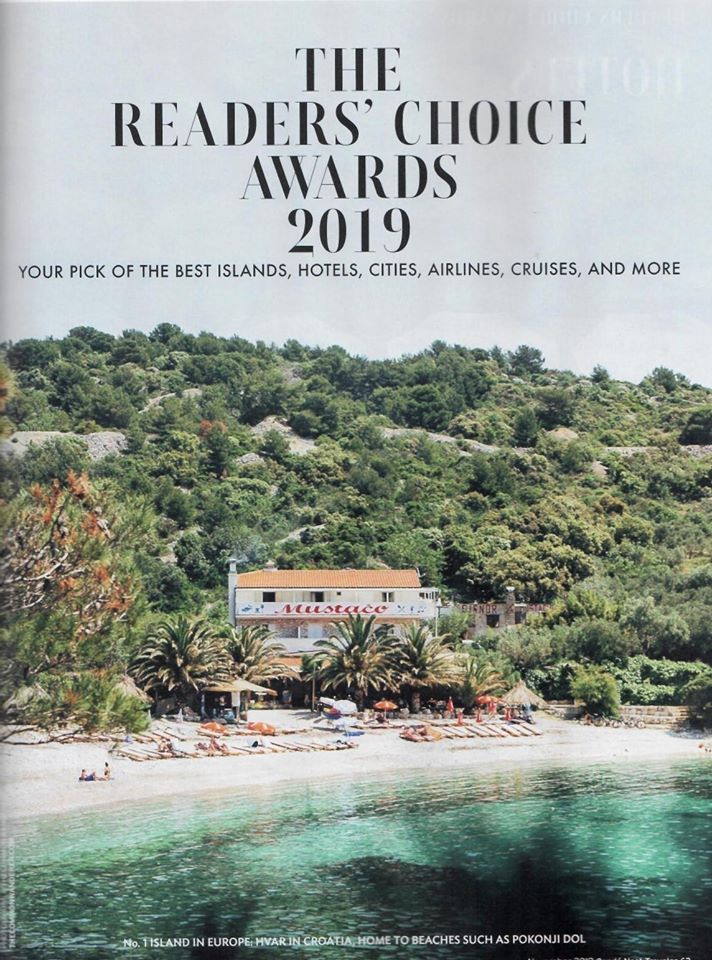
FIve months later, as Hvar and the rest of Croatia should be gearing up to another bumper tourist season, the country, like most of the rest of Europe, finds itself battling the coronavirus, with strict measures enforced to prevent its spread.
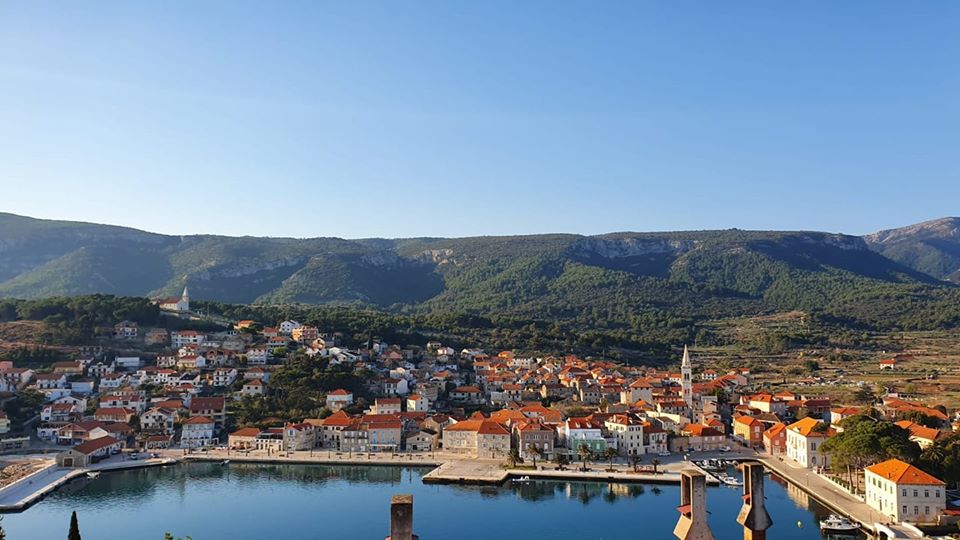
From the TCN terrace, life looks perfect. And from the TCN terrace, life really IS perfect. Rather than lose too much sleep over the lost tourist bookings of our holiday rental, we decided to relocate and self-isolate there. That endless sunshine and gorgeous terrace never fail to lift the mood.
But look a little further than the terrace, and life has changed drastically since the introduction of the new measures, as well as the growing awareness of the crisis.
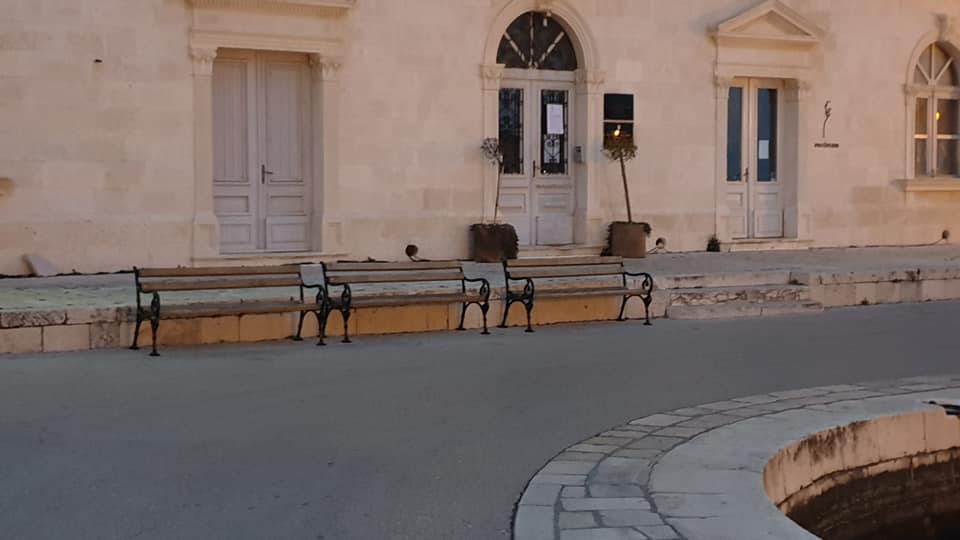
Island intellectual life has been suspended, with the collection wisdom of the wise old men of The Bench - whose knowledge has suggestions that there were the original prototype for Google - are nowhere to be seen.
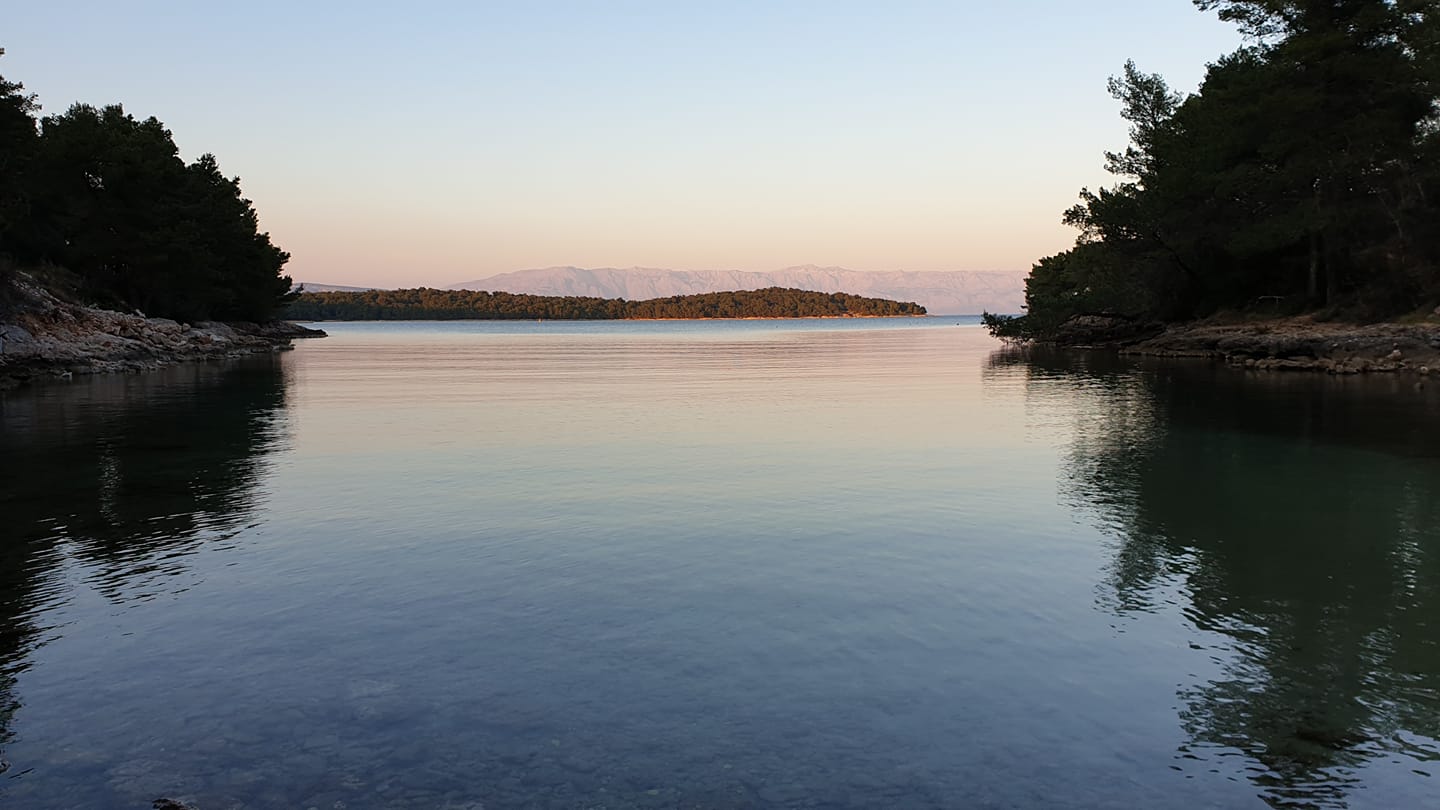
With so few people around, social distancing is not that difficult, and the further one gets from people, the closer one gets to nature.
It will be swimming season very soon, and the gorgeous Adriatic will still be there for you when all this is over.
As will the bars, cafes and restaurants of Jelsa. There is no denying that tourism is taking a hammering, and those in Croatia's tourism industry are suffering as much as anyone. A video tour of the Jelsa waterfront yesterday, with absolutely everything shut. Beautiful, no doubt, but heartbreaking.
The good news is that the virus will pass, the gorgeous island of Hvar will remain gorgeous and be waiting for your visit.
In the meantime, stay safe.
For the latest on the coronavirus crisis in Croatia, follow the dedicated TCN section.
Can You Sew? Udruga TRIM Seeks Help Making Hvar Protective Masks for Health Volunteers
March 19, 2020 - The homemade production of protective masks on Hvar has begun! And Udruga TRIM is looking for volunteers with sewing skills to increase production.
One of the positive things to observe in this time of great crisis is the sense of solidarity and community, as people come together for the common good. Croatians always come together in times of adversity, and that sense of community is one of the best things about living here. People are helping in the ways that they are able and know how, and one such example are the fabulous ladies from Udruga TRIM in Vrboska, whose activities preserving the traditions of the island have been a valuable addition to Hvar's cultural life.
And creativity is one of the many things on display with the ladies from TRIM, who have stepped up at this troubled time to develop a line of protective masks for the health volunteers and professionals of the island.
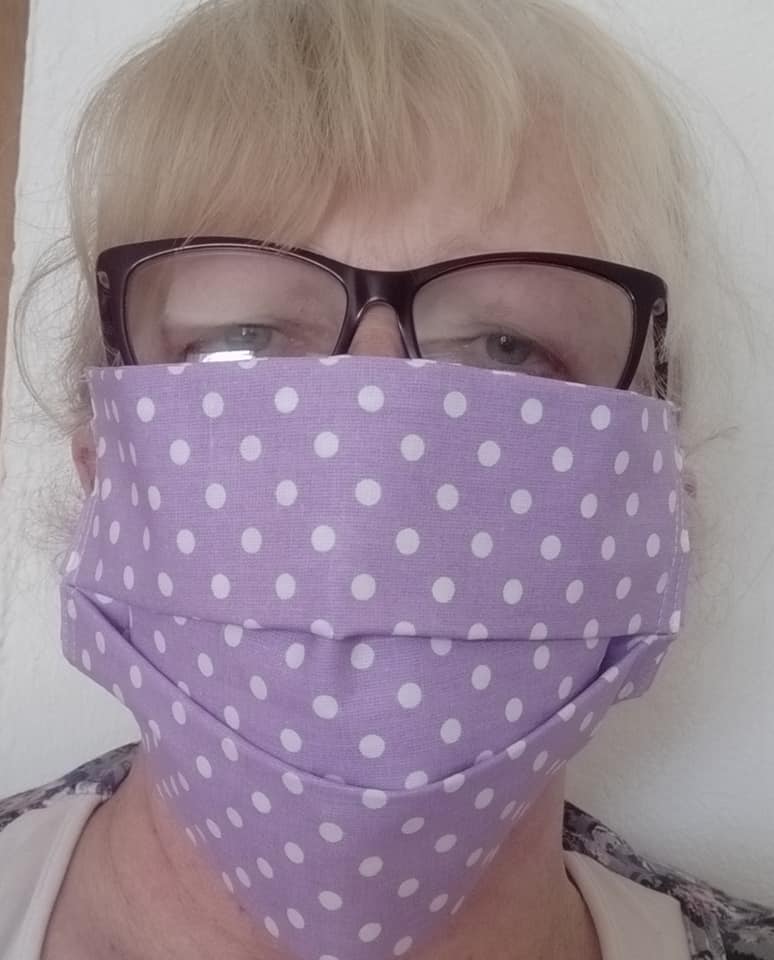
I love the lavender touch, protective masks from the lavender island.
The TRIM team have developed prototypes of the protective masks, which are 100% cotton, and they are looking for volunteers with sewing skills (and a machine) to produce masks for the health workers.
The local Red Cross is about to start an operation on the island, I understand, where they will be tending to the needs of the old and infirm with house to house visits, so the production of the protective masks is quite urgent.
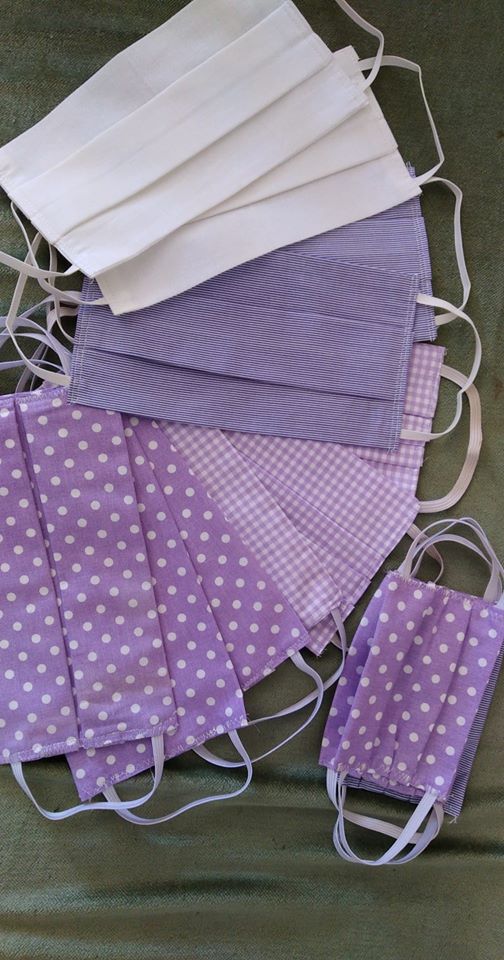
If you have a little time and better sewing skills than I possess, and you would like to get involved, the ladies at TRIM would love to hear from you. My understanding is that the sewing process is not difficult and the procedure quite straightforward, but to find out more from the ladies themselves, you can contact them through their Facebook page.
Every little helps. Stay safe.
The Realities of Self-Isolating on Hvar, Croatia's Premier Island
March 18, 2020 - Everyone has their own coronavirus story, but what is it like self-isolating on Hvar, Croatia's premier island?
Where are you spending the next two months?
As the realities of the coronavirus crisis started to hit home more and more in Croatia, the mood changed very quickly from corona memes and very relaxed attitudes to taking things very seriously. While the number of cases in Croatia remains very low, with no reported deaths at time of writing, the closing of cafes and restaurants in Istria was one dramatic move which helped to focus attention, and suddenly streets, bars and restaurants all over the country were almost empty. Schools closed for two weeks initially, and the prospect of an extended period of self-isolation looms. With no school and no tourist bookings, we took a family decision that rather than being cooped up in the house we rent in Varazdin, it would be preferable to go and self-isolate on Hvar, at our place in Jelsa.
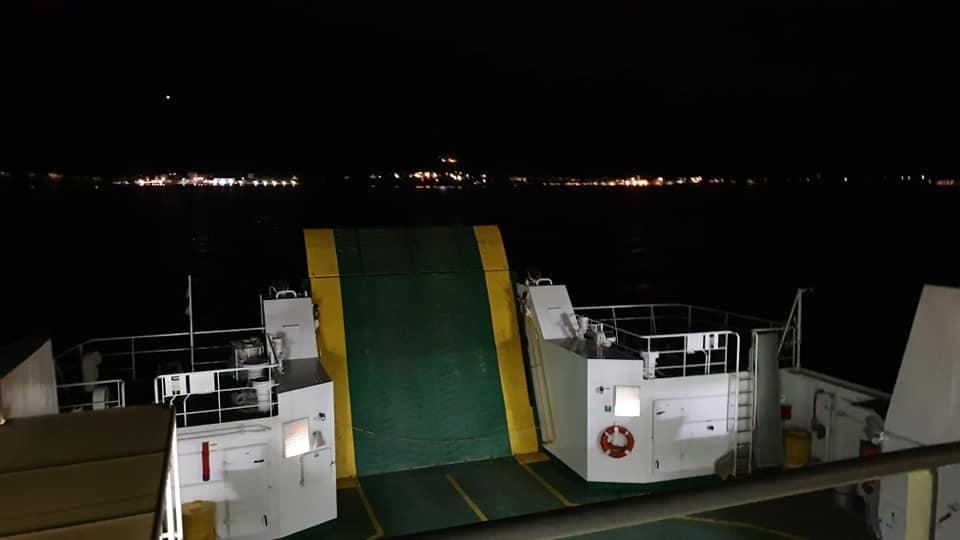
Croatia's premier island in mid-March, a time when it would be traditionally waking up for the season, but not this year. Along with the rest of the country's tourism sector, Hvar faces a tough tourism future in the short term. Living there would have its advantages and disadvantages. Whatever shortages come to shops on the mainland, they will be a lot worse on the islands. But if one can prepare oneself mentally for that, there are many, many advantages. The sun, the nature, the tranquillity. We were making the right decision, weren't we? I wondered to myself as the ferry left Drvenik for Sucuraj. This would be the last glimpse of the mainland for some time.
The look on the kids' faces as we hit the coast on the drive down convinced me we had made the right choice. Windows opened, sea air inhaled.
"I just love the smell of our island, Daddy. I have really missed this."
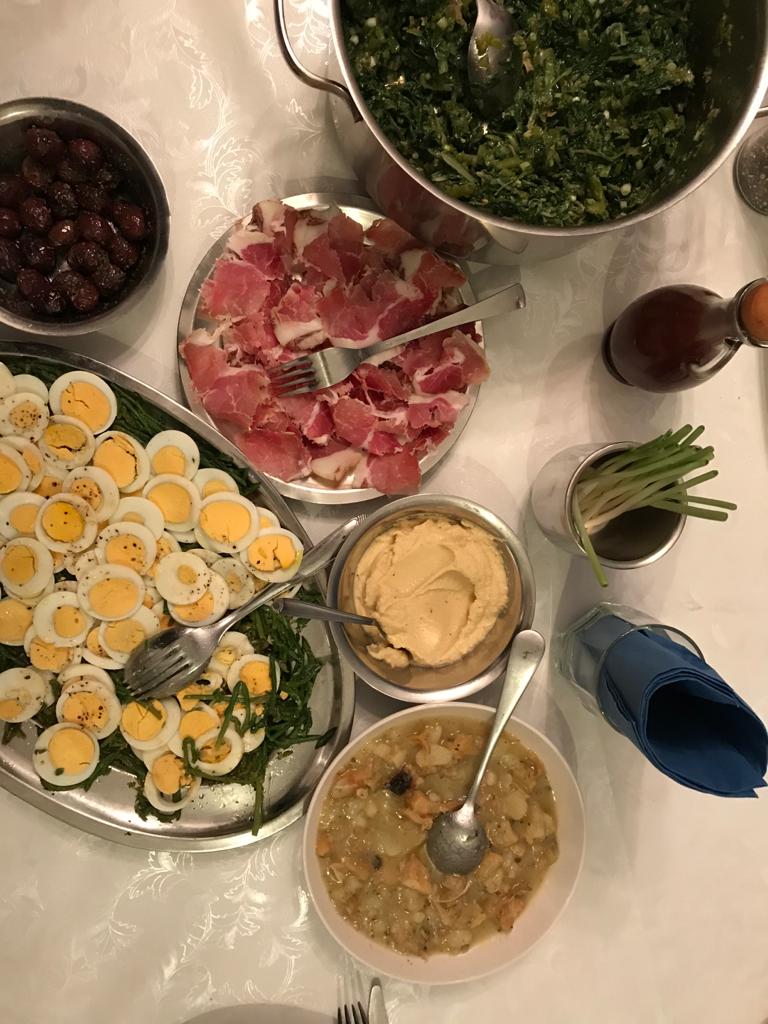
Restaurants would be closed, and many of the trappings of city living unavailable, but one of the great plus points of life on the island would be access to the freshest home-grown field from the family garden. My father-in-law is a legend with his field, and his toil provides much of the food on the family table. We had brought seeds with us, and more stuff was planted today.
And what a delicious welcome! Some staples such as meat may soon be in short supply, but there will be food available from the field.
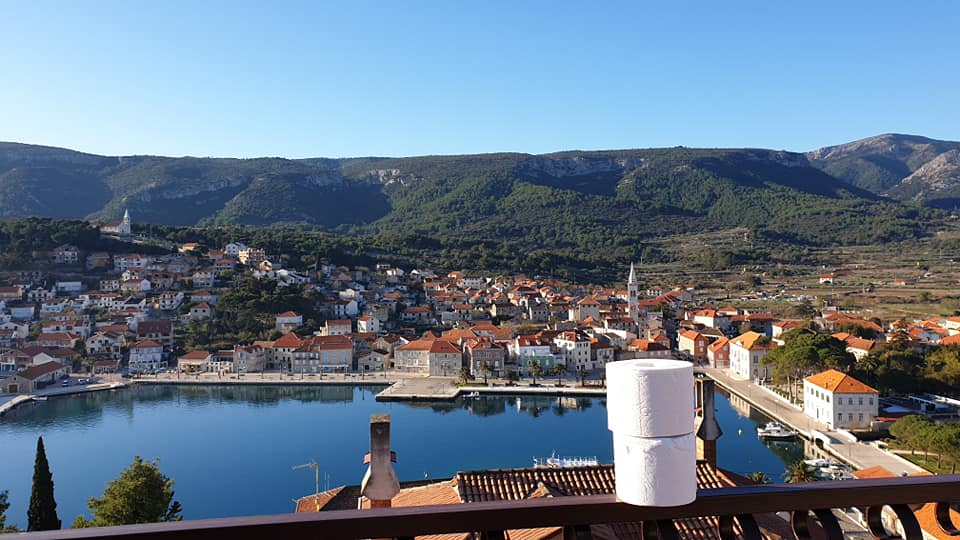
One definite advantage is the morning view! Sunshine and coffee on the terrace - one of the benefits of self-isolation on Hvar. I wrote a (what was intended to be a lighthearted) piece on the toilet paper situation yesterday, including the fact that we had decided not to panic buy in the mainland supermarkets, but rather go with the flow (so to speak) and adapt if there are shortages.
As I have not interacted with anyone physically since coming back or been to the supermarkets, I cannot give you a first-hand account of supplies. One neighbour said that meat, carrots and toilet paper were not to be found, while another friend found plenty of toilet paper in Stari Grad, but no milk, flour or onions. As with everywhere, I suspect, the situation will fluctuate. Dalmatians are a lot more conditioned for self-reliance than fat Irishmen, and they also have the recent experiences of the Homeland War to draw on. In a weird way, I am kind of looking forward to the impending hardship, as it will make me a tougher and better person. I am certainly looking forward to the Croatian solidarity - no nation is better at coming together in a time of crisis.
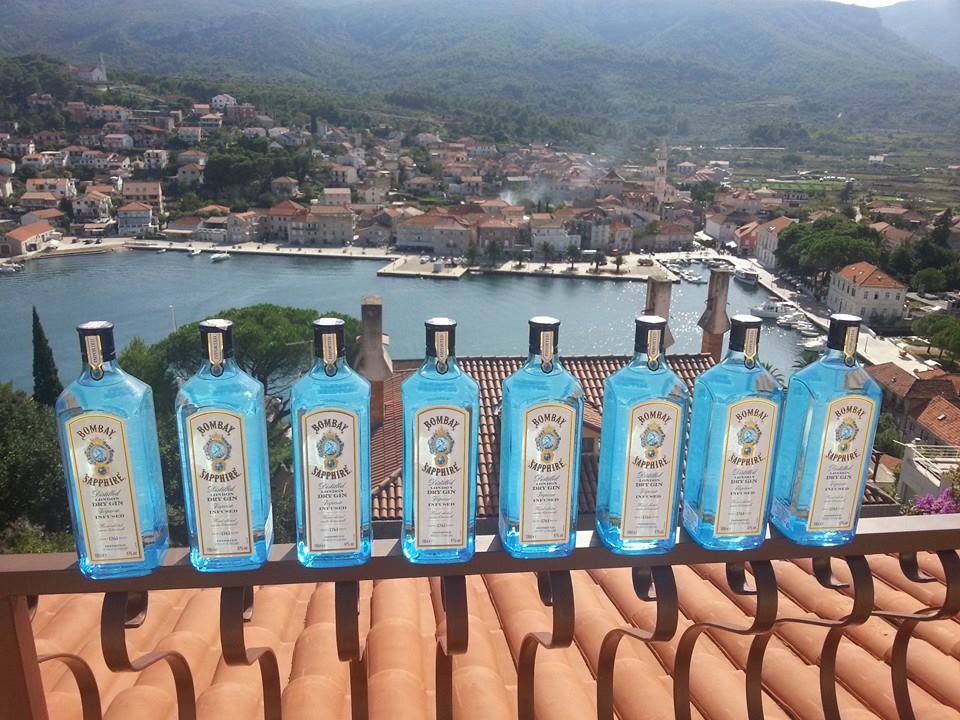
I have decided on self-isolation on Hvar without stocking up on alcohol. I look wistfully as one of my favourite photos in life, the Bombay gin terrace of 2012 and my current Facebook cover photo, but those bottles emptied a long time ago. Perhaps this self-isolation on Hvar is a chance for lifestyle reflection.
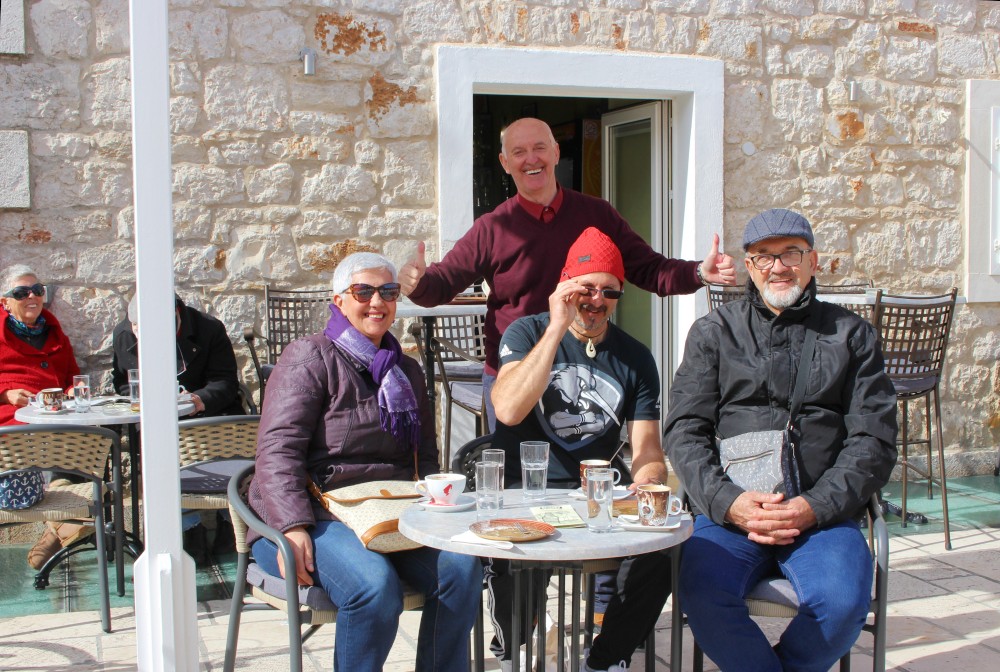
(Photo credit Vivian Grisogono)
Not that life is without temptation. I can see The Office is still open on the main square (this photo from a couple of weeks ago - thanks Viv), and there is nothing I would rather do than slip down for a midday cold one or three in the sun, as was part of my daily routine for years. But my greetings to Captain Nijaz and the team will have to wait.
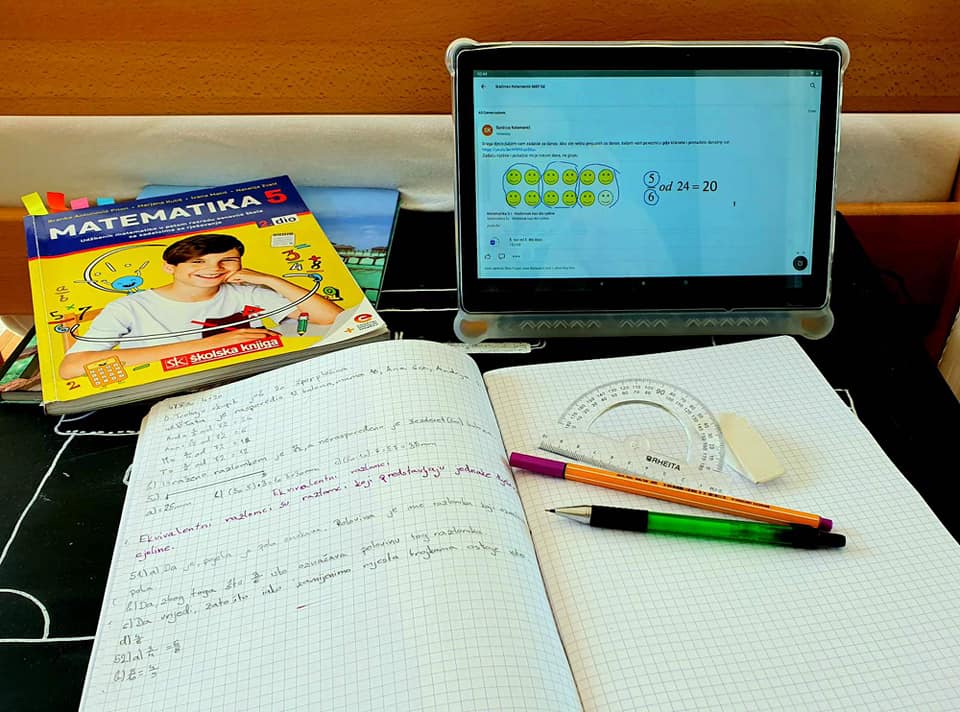
I was curious to see how remote schooling was going to work, and how the kids would take to it. There were system server issues on the first day, but things seem to have settled down, and they are diligently at their tablets doing their chores, as well as following the classes on television. I was not that optimistic that the whole thing would work, but it seems to be working very well, backed up by Viber group chats with the teachers. And this is a country where homeschooling is illegal. I wonder if one of the consequences of COVID-19 will be to push that agenda forward...
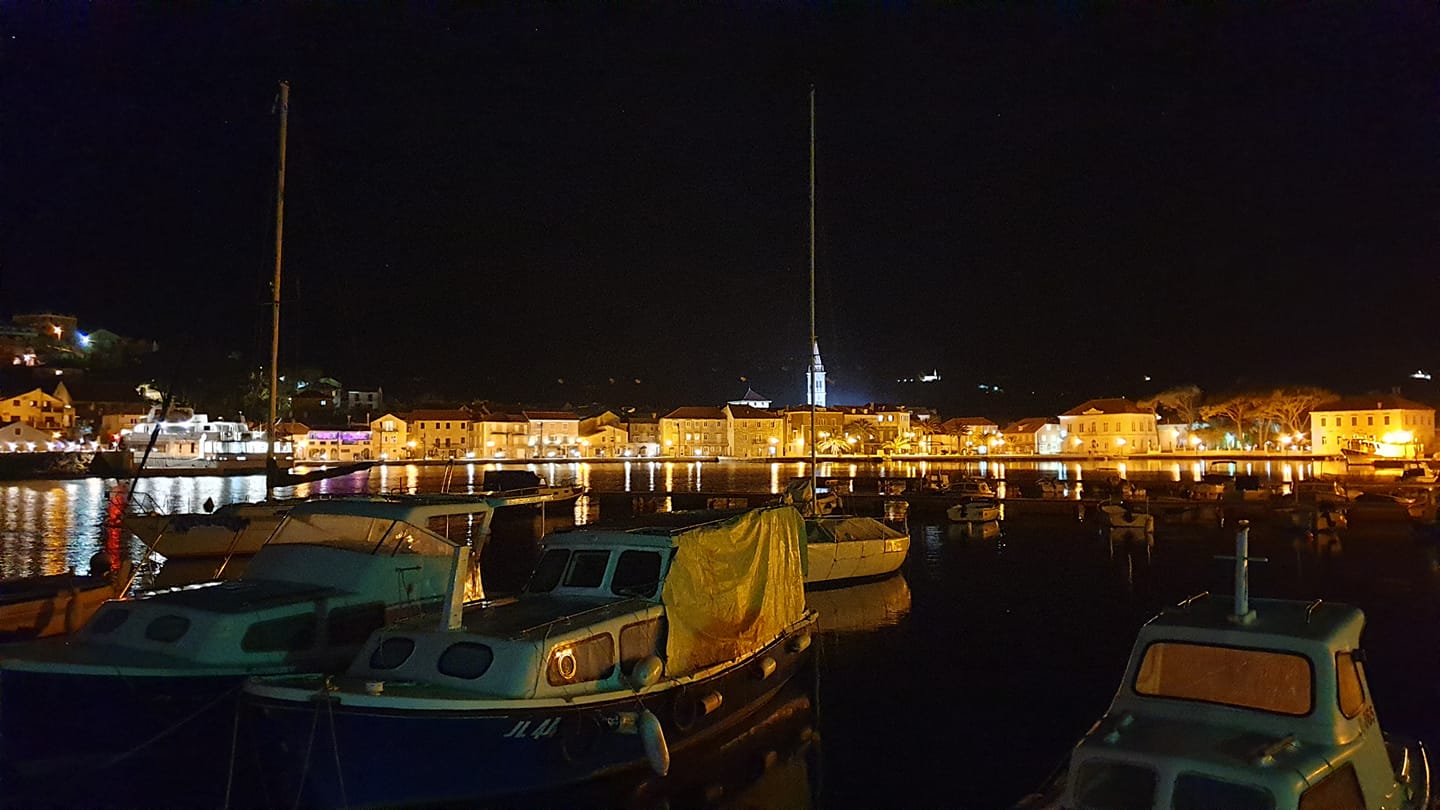
Self-isolation on Hvar means not seeing people. But a little walk around nature at night, when nobody is around, is refreshing indeed. Jelsa in the dead of night, as magical and chilled as when I first discovered it way back in 2002.
Self-isolation on Hvar? So far, so good. I will update in a week or so, from toilet supplies to wild asparagus hunting success.
For the latest on the coronavirus crisis in Croatia, follow the dedicated TCN section.
Hvar Island and Jelsa Presented Before WTO in Switzerland
As Morski writes on the 11th of March, 2020, a Jelsa delegation from Hvar island recently visited Switzerland following the official invitation of the Permanent Mission of the Republic of Croatia to the United Nations Office in Geneva and the Croatian Ambassador to the Mission, Vesna Batistić Kos, as well as the official invitation of the Croatian Embassy in Bern and Ambassador Andreja Bekić.
The Municipality of Jelsa and the Tourist Board, headed by Mayor Niksa Peronja and the Director of the Tourist Board Marija Marjan, together with Hvar island winemakers, oilmen and those in the hospitality industry presented their products. Along with wines and oils, the main theme was the Mediterranean diet. The main objective of this event was to promote the Municipality of Jelsa and Hvar island in terms of tourism and culture.
The Minister of Foreign and European Affairs of the Republic of Croatia, Gordan Grlic Radman, ambassadors and many diplomatic representatives also attended the presentation at the WTO (World Trade Organisation).
In addition to excellent wines mostly of original Croatian varieties, guests were also able to taste the typical dishes of Hvar island prepared by local chefs.
''This is only the first step when it comes to the joint performances with which we want to open the doors to new markets, both for the export of wine and other products, as well as for winning over new tourists who will come to visit our country.
Wine is a product that binds closely to a certain territory, it can be a great invitation to discover the place where it came from. Since tourism is a good way of generating new demand, cooperation with the Tourist Board of the Jelsa Municipality in the area of the most important wineries of Hvar island is especially important for us,'' said the president of the Association of Croatian Winemakers, Ivana Krstulovic Caric.
In order to maximise the visibility of Dalmatian wines, especially the original varieties - wineries from other areas of Dalmatia have also been included as today's tourists are exploring more destinations and will also visit other Dalmatian cities, such as Zadar, Sibenik, Split, Imotski and nearby vineyards on their way to (or from) Hvar island.
Make sure to follow our lifestyle page for more.

